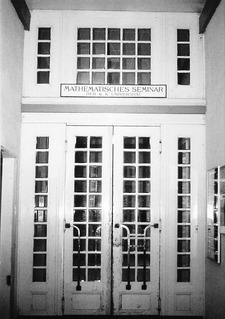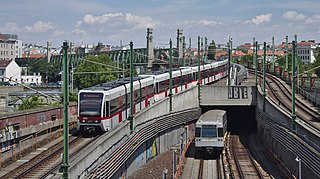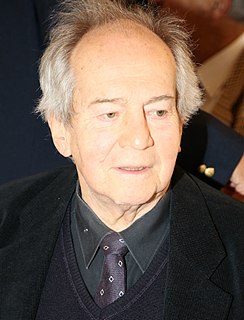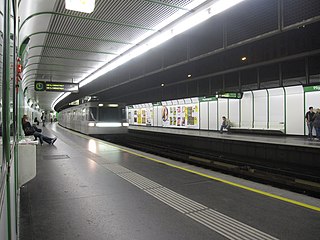Otto Wiener may refer to:
Otto Wiener may refer to:

Otto von Habsburg, was the last crown prince of Austria-Hungary from 1916 until the dissolution of the empire in November 1918. In 1922, he became the pretender to the former thrones, head of the House of Habsburg-Lorraine, and sovereign of the Order of the Golden Fleece upon the death of his father. He resigned as Sovereign of the Golden Fleece in 2000 and as head of the Imperial House in 2007.

The Vienna Philharmonic is an orchestra that was founded in 1842 and is considered to be one of the finest in the world.

The Vienna Circle of Logical Empiricism was a group of philosophers and scientists drawn from the natural and social sciences, logic and mathematics who met regularly from 1924 to 1936 at the University of Vienna, chaired by Moritz Schlick. The Vienna Circle's influence on 20th-century philosophy, especially philosophy of science and analytic philosophy, is immense up to the present day.

Oscar Mayer is an American meat and cold cut producer known for its hot dogs, bologna, bacon, ham, and Lunchables products. The company is a subsidiary of the Kraft Heinz Company and based in Chicago, Illinois.
Wiener may refer to:
Otto Muehl was an Austrian artist, who was known as one of the co-founders as well as a main participant of Viennese Actionism and for founding the Friedrichshof Commune.

Friedrich "Fritz" Karl Otto Wunderlich was a German lyric tenor, famed for his singing of the Mozart repertory and various lieder. He died in an accident aged 35.

The Vienna U-Bahn, where U-Bahn is an abbreviation of the German term Untergrundbahn, is a rapid transit system serving Vienna, Austria. With the September 2017 opening of the 4.6 kilometers (2.9 mi), five-station extension of the U1 line, the five-line U-Bahn network consists of 83.1 kilometers (51.6 mi) of route, serving 109 stations. It is the backbone of one of the best performing public transport systems worldwide according to UITP in June 2009. More than 1.3 million passengers rode the Vienna U-Bahn every day in 2009, and 567.6 million passengers used the U-Bahn in 2011, which declined to 428.8 million passengers in 2013. The network is undergoing expansion and rolling stock renewal. Since 1969, 200 million euros have been invested annually in the extension of the Vienna U-Bahn.

The Wiener Werkstätte, established in 1903 by the graphic designer and painter Koloman Moser, the architect Josef Hoffmann and the patron Fritz Waerndorfer, was a productive association in Vienna, Austria that brought together architects, artists, designers and artisans working in ceramics, fashion, silver, furniture and the graphic arts. The Workshop was "dedicated to the artistic production of utilitarian items in a wide range of media, including metalwork, leatherwork, bookbinding, woodworking, ceramics, postcards and graphic art, and jewelry." It is regarded as a pioneer of modern design, and its influence can be seen in later styles such as Bauhaus and Art Deco.

The Vienna Secession is an art movement, closely related to Art Nouveau, that was formed in 1897 by a group of Austrian painters, graphic artists, sculptors and architects, including Josef Hoffman, Koloman Moser, Otto Wagner, and Gustav Klimt. They resigned from the Association of Austrian Artists in protest against its support for more traditional artistic styles. Their most influential architectural work was the Secession Building designed by Joseph Maria Olbrich as a venue for expositions of the group. Their official magazine was called Ver Sacrum, which published highly stylised and influential works of graphic art. In 1905 the group itself split, when some of the most prominent members, including Klimt, Wagner, and Hoffmann, resigned in a dispute over priorities, but it continued to function, and still functions today, from its headquarters in the Secession Building. In its current form, the Secession exhibition gallery is independently led and managed by artists.

Karl von Habsburg is an Austrian politician and the head of the House of Habsburg-Lorraine, therefore being a claimant to the defunct Austrian-Hungarian throne.

Dr. Otto Herschmann was an Austrian Jewish swimmer, fencer, lawyer, and sports official. He is one of only a few athletes who have won Olympic medals in multiple sports, having received a silver medal in swimming in 1896 and a silver medal in fencing in 1912. He also worked as a lawyer, and served as president of the Austrian Olympic Committee and the Austrian Swimming Federation. Herschmann was murdered by the Nazis in 1942 during The Holocaust.

Otto Schenk is an Austrian actor, and theater and opera director.
Otto Edelmann was an Austrian operatic bass.
The Vienna School of Art History was the development of fundamental art-historical methods at the University of Vienna. This school was not actually a dogmatically unified group, but rather an intellectual evolution extending over a number of generations, in which a series of outstanding scholars each built upon the achievements of their forerunners, while contributing their own unique perspectives. Essential elements of this evolution became fundamental for modern art history, even if the individual methods can today no longer claim absolute validity.
Otto Wiener was an Austrian baritone, notable for his performances in the operas of Richard Wagner.
Wiener Athletiksport Club, also known as Wiener AC or WAC, is an Austrian sports club in Vienna. It is particularly noted for its hockey team, which was established in 1900.

Pilgramgasse is a station on the Vienna U-Bahn line U4. It is located in Margareten between Ramperstorffergasse and the eponymous street, which is named after Franz Anton Pilgram (1699–1761), an Austrian Baroque architect. The station is in an open cut parallel to the River Wien and curves to match the curve of the river.

Otto Heinrich Wiener was a German physicist.
Wolfgang Müller-Wiener was a German architecture historian, archaeologist and Byzantinist.